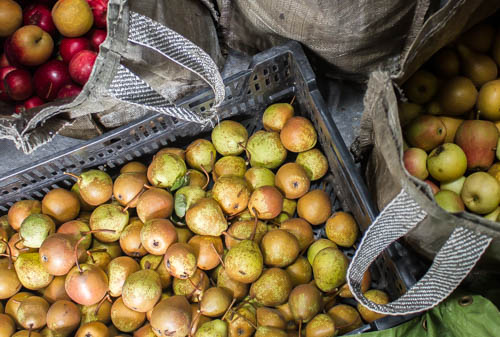
Start clearing leaves as soon as they begin to fall. Leave a thick layer on the lawn and the grass below soon dies through lack of light – it encourages turf diseases, too. Choose a still day if you can or rake or blow them in the direction of the prevailing wind. After collection, rot them down in a leaf pile at least 1 m cubed, (the larger the better) made from chicken wire or pack smaller quantities loosely tied black bin liners with a few holes punched in them. Moisten them with a hose if necessary. In smaller areas with fewer leaves, raise the cutting height on your rotary mower, mow over leaves to chop them up, then add the contents of the collecting bag to your compost heap or just blow them into the borders to rot down. Collect leaves infected with black spot, pear scab or powdery mildew separately and put them in the council recycling bin. Remember to cover your pond before the leaves start falling in great numbers.
Check your greenhouse heater to make sure that it works before the cold nights set in. There is nothing worse than hearing predictions of frost on the weather forecast and being unprepared, it is worth having a cheap back-up heater, too. Tender plants can be stored under the greenhouse benches as added protection; make sure the compost has dried out too. Ventilate the greenhouse on sunny days, shutting the windows by the middle of the afternoon to capture the warm air, so it cools down slowly as the day draws on.
Seeds of plants like Acer, Sorbus and magnolia species need a period of chilling to initiate germination, otherwise they will just remain dormant. Either sow seed now and put the posts in a cold frame or against a sheltered wall, covered with chicken wire to protect the seeds from squirrels or put them in a bag of moist organic compost and leave them out over winter before sowing in spring. Alternatively, put the seeds in a plastic bag in the fridge for a couple of months.
Dahlia tubers are usually overwintered outdoors in warmer areas, though it’s worth bearing in mind there is always a risk of a ‘one off’ winter that is harder than normal. Once the first frosts have blackened the plants, cut back the foliage to within 5cm of the base and cover with a thick mulch of well-rotted organic matter or forest bark. In colder climates tubers of tender plants like Dahlias and Cannas should be lifted and stored in a cool frost-free place. Make sure the labels stay with the tubers, turn them upside down for a few weeks, so water drains from the hollow stems, then turn them upright and store them in trays with the tubers covered in compost as protection – spent compost from hanging baskets and containers is ideal.
Apple and pear harvest will soon be in full swing. Cup your hands under the fruit, hold gently but firmly then lift and twist, it will detach when ripe. You may need to go over each tree once or twice to collect all of the fruit. Use damaged fruit immediately, keep perfect fruit for storage and leave some windfalls for wildlife.
Happy gardening! Matt


